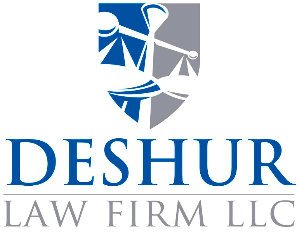Chapter 7
Bankruptcy
Chapter 7 Bankruptcy is the most common type of Bankruptcy and is available to individuals, married couples, corporations and partnerships.
Chapter 7 is a liquidation proceeding in which the client's non-exempt assets, if any, are sold by a court-appointed "trustee" and the proceeds distributed to creditors according to priorities established in the U.S. Bankruptcy Code. In most cases, however, all assets are "exempt". Therefore, there are no assets to liquidate and there is no payment to creditors. All or most debts are completely forgiven or "discharged" and the client retains all of his assets.
If the client owes money on a home, motor vehicle or other property that is secured by a mortgage, security agreement or other type of lien, he has the following options under Chapter 7:
Retain the property, "reaffirm" the debt and keep making regular payments to the creditor;
"Redeem" the property by making a lump sum payment to the creditor for its fair market value; or
Surrender the property to the creditor and discharge all further liability for the debt.
A Chapter 7 Bankruptcy will not eliminate student loans except in undue hardship cases, certain types of taxes, alimony or child support obligations, criminal fines and restitution, debts incurred through fraudulent conduct, debts incurred through intentional injury to person or property, or debts for personal injuries caused while intoxicated.
A Chapter 7 Bankruptcy proceeding is commenced by filing Official Bankruptcy Forms in the U.S. Bankruptcy Court. These forms require a debtor to list all of his assets and debts, along with some recent financial information. This is the most important and time-consuming part of a Bankruptcy filing.
It is important that every creditor is listed on the Bankruptcy forms with an accurate mailing address. All debts must be listed, even if a particular debt is non-dischargeable or the client intends to "reaffirm" and continue paying the debt.
The Bankruptcy forms are signed by the client under penalty of perjury, then filed with the Bankruptcy court clerk in the district in which the debtor resides, or has resided for the greater part of the last 180 days.
To file an individual or joint Chapter 7 Bankruptcy, a court filing fee in the amount of $338 must be paid to the U.S. Bankruptcy Court at the time of filing. If the client's annual gross household income is not more than 150% of the federal poverty guideline for his family size, the Chapter 7 filing fee can be waived altogether.
A Chapter 7 Bankruptcy is effective immediately upon filing and an "automatic stay" immediately stops all collection activity, including foreclosure, repossession, garnishment, lawsuits, creditor contact, etc.
The Bankruptcy court will mail notice of the Bankruptcy filing and automatic stay to each of the creditors listed on the client's Bankruptcy forms. Any creditor who violates the automatic stay by attempting to collect a debt from the dclientebtor may be held in contempt of court and punished by fine or imprisonment.
About 4-6 weeks after the Bankruptcy filing date, the client must attend a "341 meeting" (also known as a "meeting of creditors"). At the 341 meeting, the trustee will ask the client a few questions regarding his financial situation. The meeting in a typical consumer case lasts about 10 minutes and creditors virtually never attend the meeting.
The client should receive a final discharge order in the mail within 3-5 months after the 341 meeting. The final discharge order will provide that the debtor’s debts (except any debts that have been voluntarily reaffirmed or are non-dischargeable by law) are formally discharged and that any court judgments for a debt entered against the client at any time prior to filing Bankruptcy are null and void.
